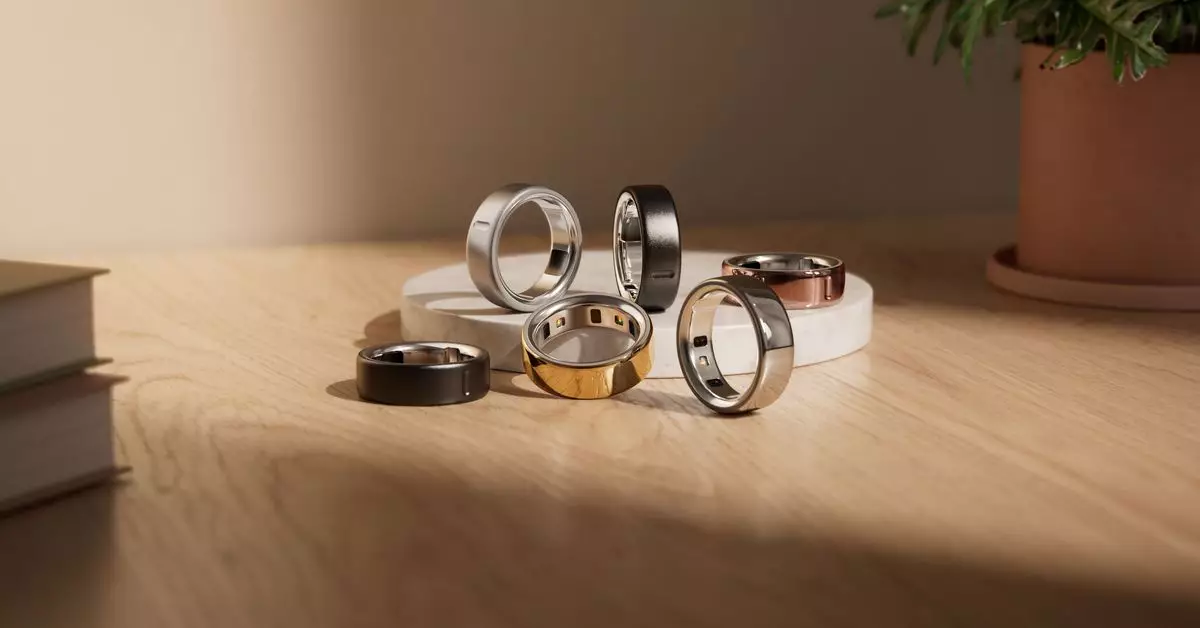The realm of health technology continues to evolve, with wearable devices at the forefront of this transformation. Among these devices, Oura Ring has garnered significant attention for its sleek design and advanced tracking capabilities. Recently, the company introduced the Oura Ring 4, heralding notable changes that aim to enhance user experience. This article takes a deep dive into these updates, evaluating both the hardware enhancements and the software improvements incorporated in the latest version of Oura’s smart ring.
Refining the Design: Form Meets Function
At first glance, the Oura Ring 4 maintains a resemblance to its predecessor, the Oura Ring Gen 3. However, a closer inspection reveals a metamorphosis in its design and materials. The new iteration boasts a completely titanium build, a departure from the epoxy interior of earlier models. This change not only contributes to the ring’s durability but also offers a more refined aesthetic. Additionally, the ring is now entirely circular, aligning with current design trends that favor seamless, flat profiles without any edges.
The most significant design shift lies in the sensor configuration. The protruding dome-shaped covers have been replaced with recessed sensors, optimizing comfort. As fitness enthusiasts know, sensor placement is critical for accurate biometric readings. The new configuration minimizes discomfort while enhancing the device’s performance by promoting better sensor placement throughout daily activities.
While improved design is important, the real innovation lies within Oura’s upgraded algorithms. Recognizing the inherent variability of finger sizes and shapes, the company has addressed a common issue faced by smart ring users: inaccurate data collection caused by misalignment. By increasing the number of signal pathways from eight to 18, Oura has improved the ring’s ability to obtain optimal readings, regardless of the movement or position of the user’s finger.
Such advancements claim to enhance signal quality by an impressive 120% and result in a marked 30% improvement in blood oxygen accuracy. Furthermore, the algorithm reportedly reduces gaps in heart rate readings during both daytime and nighttime periods, addressing a critical concern for many users. These statistics, sourced from controlled studies, raise expectations, but real-world performance will ultimately determine the effectiveness of these claims. The possibility of an eight-day battery life adds to the appeal, allowing wearers to spend less time charging their devices.
Oura’s attention to inclusivity is further illustrated by its expansion in size offerings. The new size range, from 4 to 15, marks a significant shift from the previous limit of 6 to 13. This change is crucial not only for accommodating a broader demographic but also aligns with evolving market trends, which reveal a growing female user base, particularly among younger women. By embracing diversity, Oura enhances its reach and accessibility, ultimately paving the way for more women to engage with health technology.
Revamping the App: An Organized Experience
With a multitude of features introduced in recent months, Oura’s app has become increasingly complex, leading to user frustration. However, the redesigned app aims to rectify this concern by adopting a more structured layout divided into three main sections: Today, Vitals, and My Health. This segmentation allows users to navigate easily, accessing a dynamic summary of biometrics, detailed metrics, and long-term health trends in a streamlined manner.
Moreover, the app introduces new features such as automatic activity detection for 40 different types of movement and enhanced Daytime Stress metrics. One noteworthy addition is the fertile window prediction tool, catering to those planning to conceive. While Oura clarifies that this feature is not intended as a contraceptive method, the collaboration with Natural Cycles demonstrates a commitment to comprehensive health tracking.
Looking Forward: Oura’s Market Position
With a starting price of $349, the Oura Ring 4 reflects a $50 increase compared to its predecessor. However, this investment may be justified by the multitude of enhancements offered. For current users of the Oura Ring Gen 3, the brand promises continued availability until existing stock is depleted, ensuring a transition period for users.
The introduction of a revamped subscription model, which remains unchanged at $6 monthly or $70 annually, reinforces Oura’s commitment to customer investment without further financial burden. With the launch of the Oura Ring 4, the company is poised not only to maintain its relevance but also to expand its user base in an increasingly competitive market.
The Oura Ring 4 is not merely an upgrade; it is a comprehensive reimagining of what a smart ring can provide. By refining both its design and software capabilities, Oura is setting a new standard for wearables in health technology. As consumers look for devices that marry style with functionality, Oura is well-positioned to meet these evolving demands.

